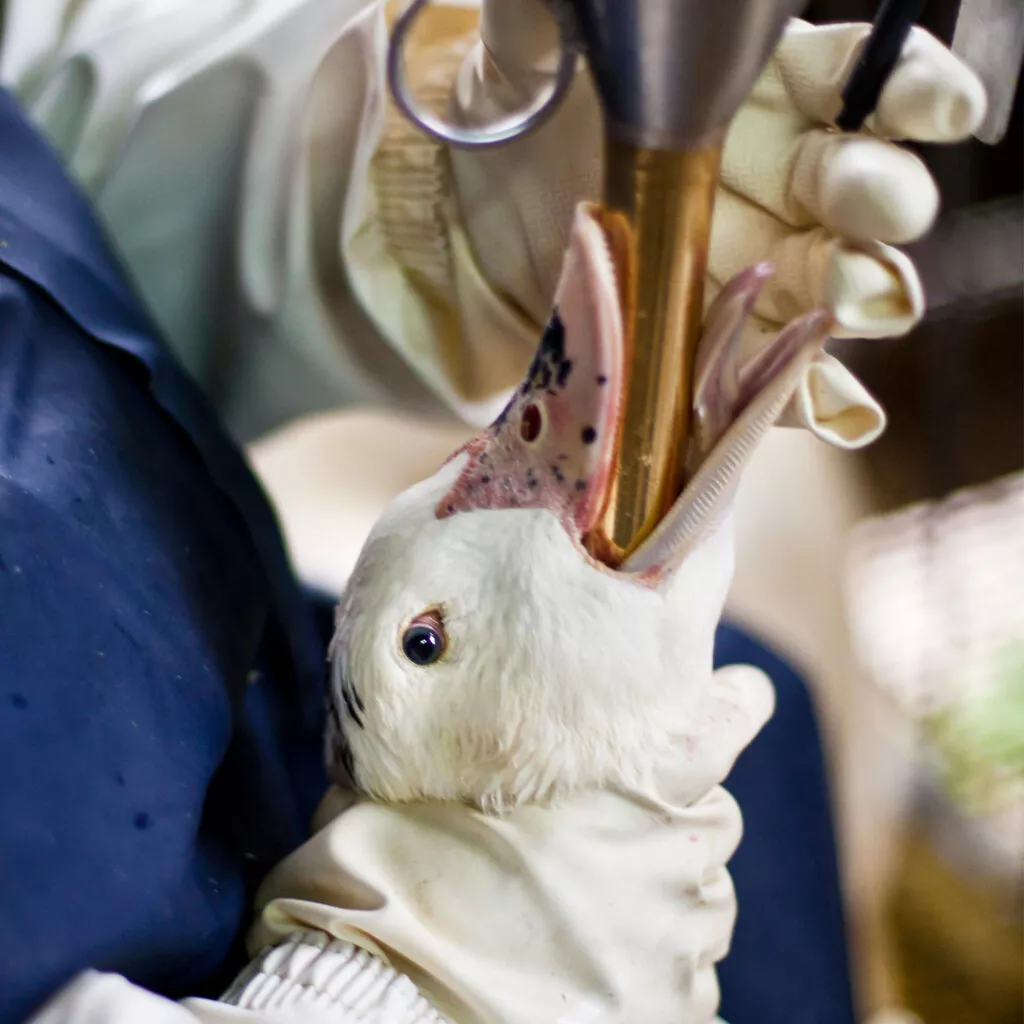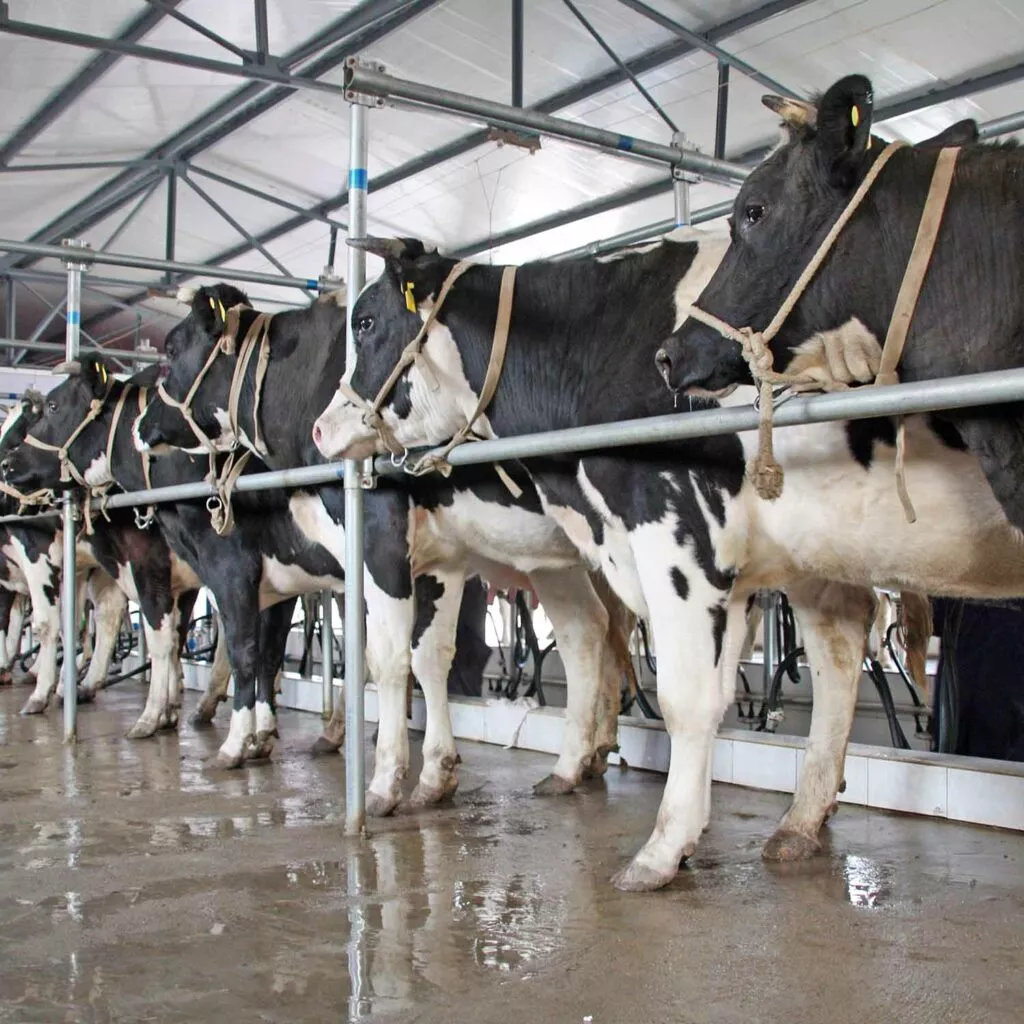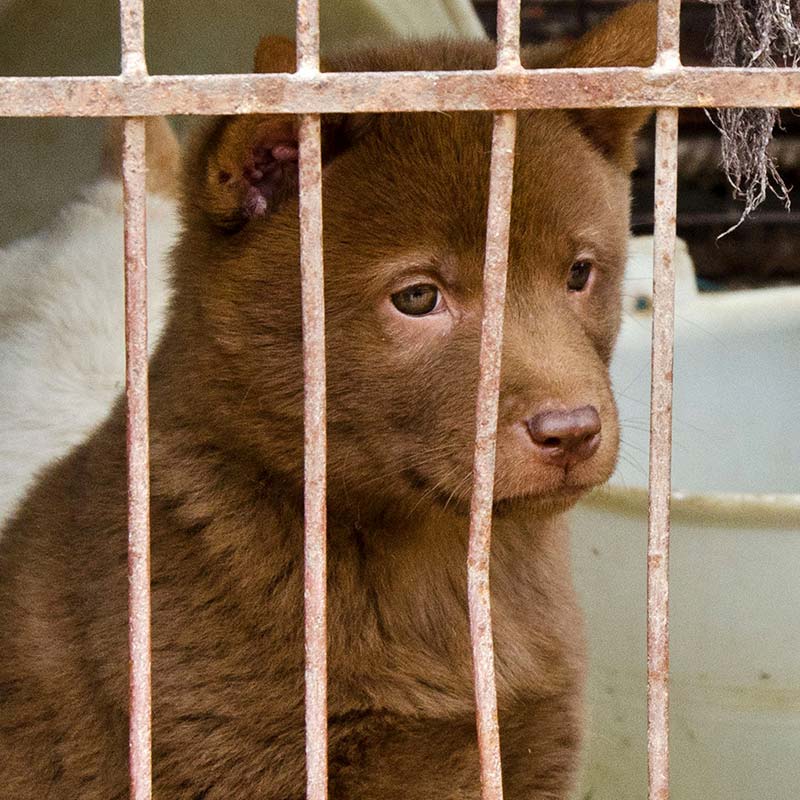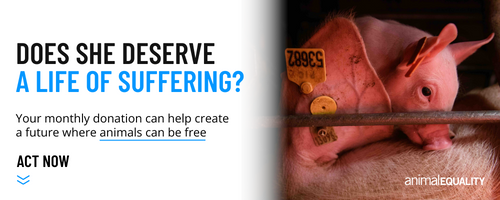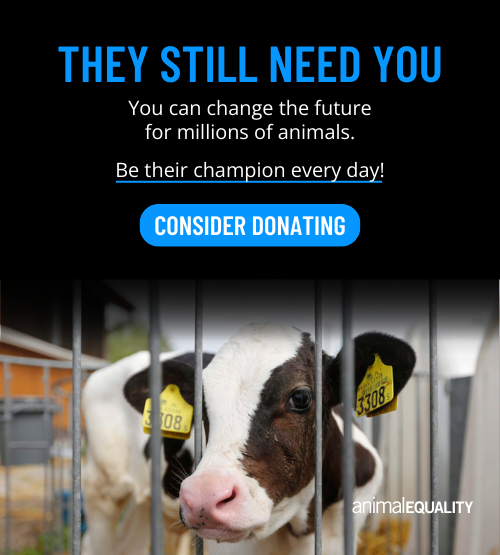
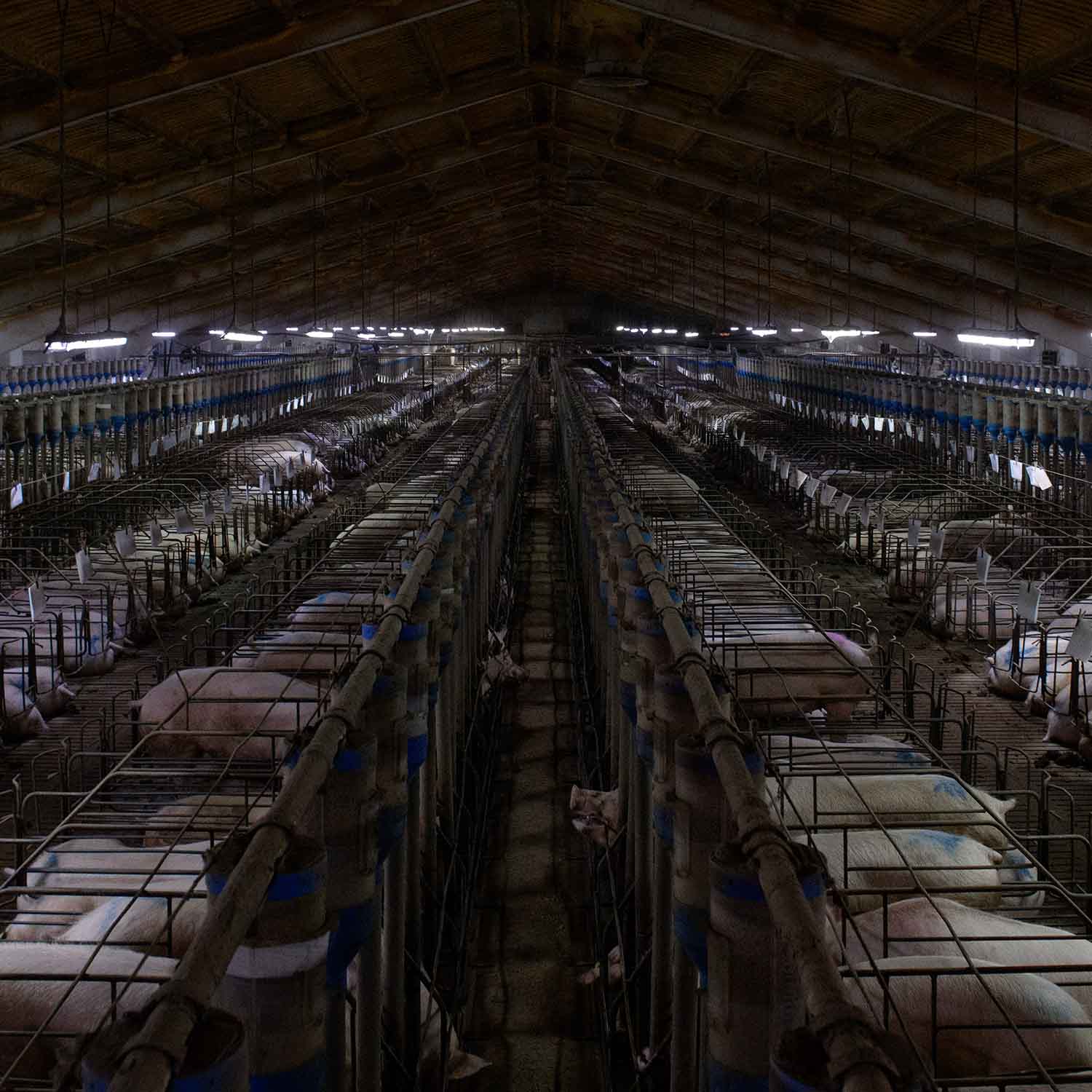
Factory farming: The largest cause of animal abuse in history
Did you know the number of animals killed yearly is eight times Earth’s human population?
At no other time in history have animals suffered and died on such a massive scale.
And while the meat, dairy, and egg industries have tried to hide the worst abuses from the public, Animal Equality is exposing the secrets they work so hard to keep.
What are factory farms?
These big, windowless sheds house the animals that will be slaughtered and sold for their meat. Facilities like these are all around us—even in our own backyards.

Pigs in factory farms
Pigs spend their lives in cages so small they can’t even turn around. They remain this way for months until they are moved to a second cage to give birth. Here, they are unable to nurture their babies.
These mothers and their piglets will never experience the sun, fresh air, or socialization. They will be unable to exhibit natural behaviors in this unnatural environment. Many pigs will die without veterinary care, tossed haphazardly into the trash bin. Some will be killed with hammers or thrown against walls.
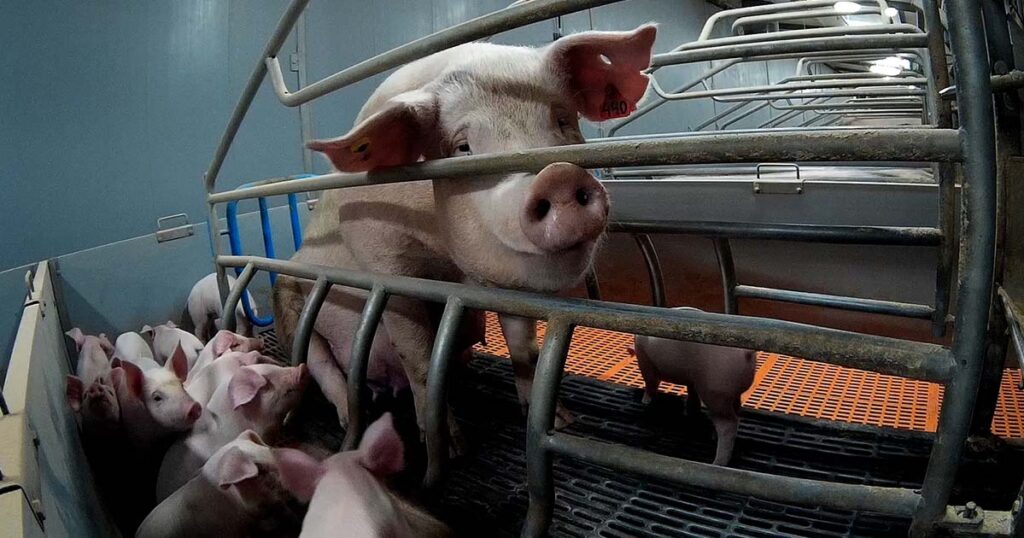
Chickens in factory farms
Like products of an assembly line and only hours after birth, chickens used for meat are stacked in boxes and sent to fattening farms. They will only live for six weeks before they are sent to the slaughterhouse—if they don’t die before. They will grow too rapidly for their bodies to handle, many immobilized by their own weight and unable to even walk to their food or water.
Weakened chicks who can’t survive the extreme conditions are thrown directly into the trash bins. Here, they are suffocated or crushed with clubs.
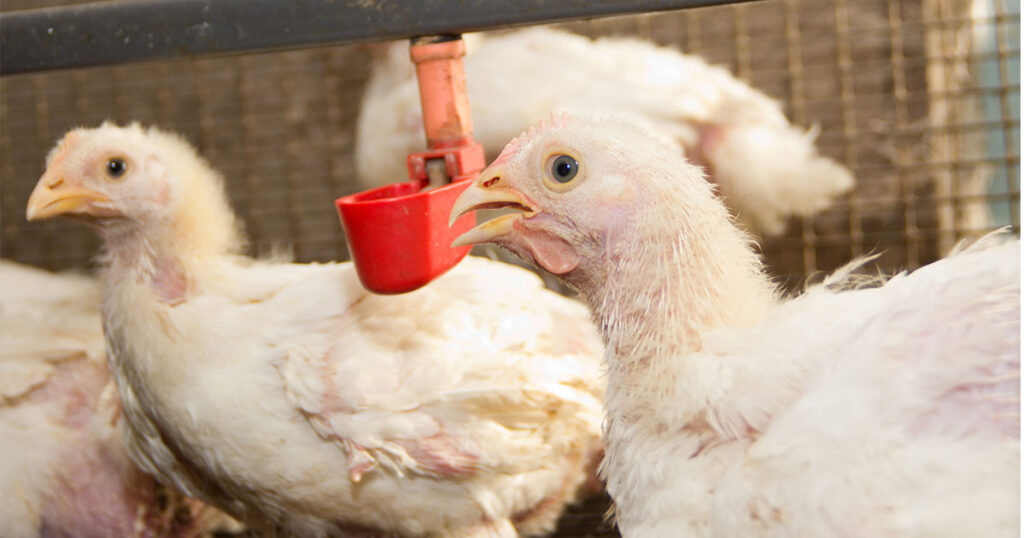
Ducks and geese force-fed for foie gras
Caged and unable to move, ducks from the foie gras industry are force-fed with long tubes, pumping calorie-dense food directly into their stomachs to induce fatty liver disease. After slaughter, their livers will be sold as a French luxury dish.
Extreme temperatures on farms are common, leading to sickness and death.
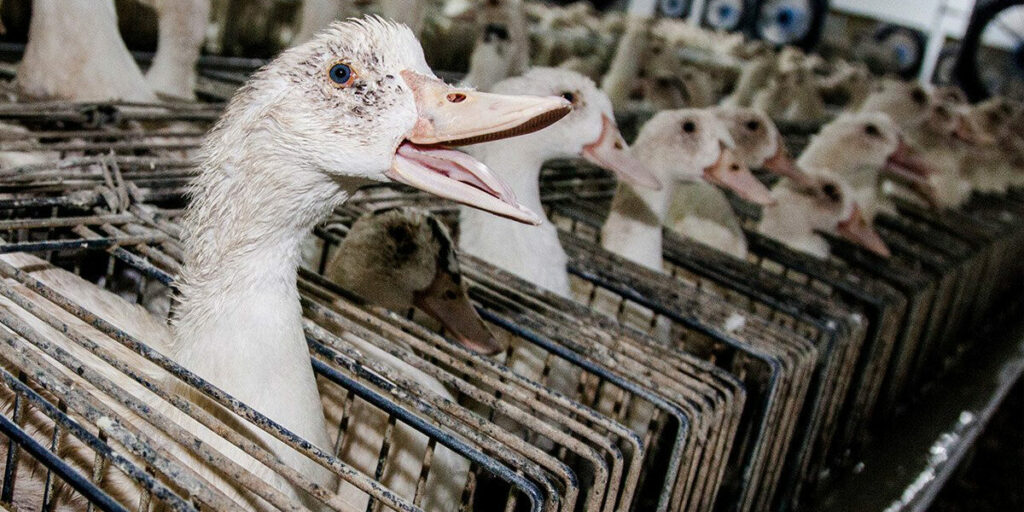
Cows
In the dairy industry, mother cows are artificially inseminated and separated from their calves at birth. As the newborn cows are taken away, their mothers chase after them and cry for days. The males are killed for their meat and sold as veal.
The milk that was intended for their young is taken and sold to consumers. When mothers stop producing milk, they are inseminated again. Their female calves will endure the same cycle.
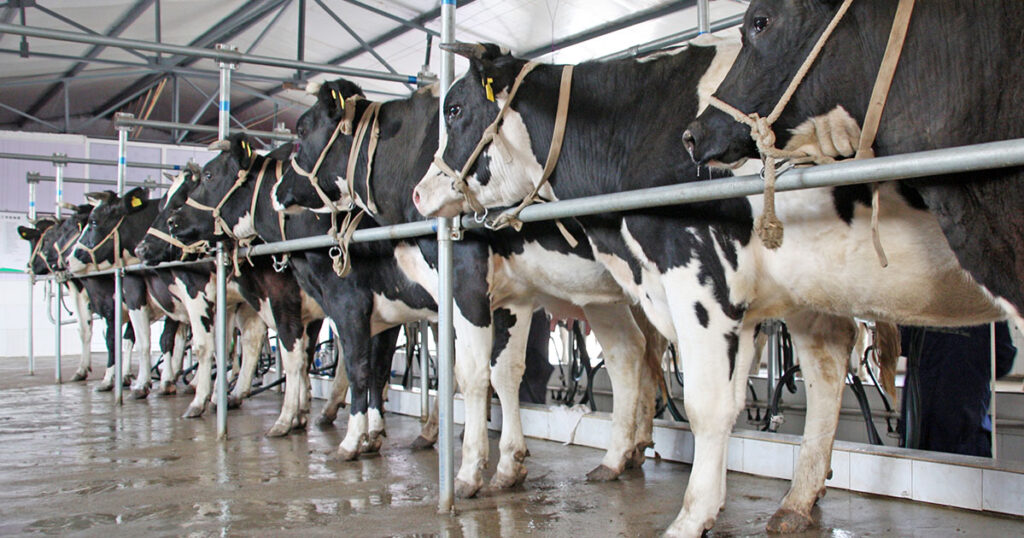
Hens are kept in cages for the production of eggs
The egg industry keeps hens in wire cages for their entire lives. Up to six of them are put in one cramped cage, often trampling the dead bodies of their companions. Each hen is only allotted living space the size of a piece of printer paper. Egg farms typically have tens of thousands of hens in each shed in rows of cages stacked on each other. Some farms keep one million hens or more throughout multiple sheds.
These hens often peck each other in frustration, causing them to lose their feathers. To minimize this, the sensitive beaks of newborn female chicks will be cut without anesthesia.

For many animals, the only time they see and feel the light and warmth of the sun will be during the trip to the slaughterhouse. Animals are crammed into large trucks, often traveling for days without food or water.
At the slaughterhouse, animals are stunned – often ineffectively – and then hung upside-down, decapitated, and skinned or dismembered. Those who await their turns for slaughter will witness other animals dying before them. They will try to escape but will ultimately be unsuccessful.
How to stop factory farming
These conditions are a far cry from the humane, happy cows prancing across grocery store packaging. This is not an accident. You are being deceived.
That is why millions across the globe have taken action, replacing meat, dairy, and eggs with a wide variety of plant-based options. From bean tacos to creamy pasta, cruelty-free foods are rich in flavor, comfort, and satisfaction.
To join them by beginning your plant-based journey, you can access an entire library of free resources at Love Veg. You’ll discover all your favorite comfort food recipes, a wealth of inspiration, and answers to all your burning questions.
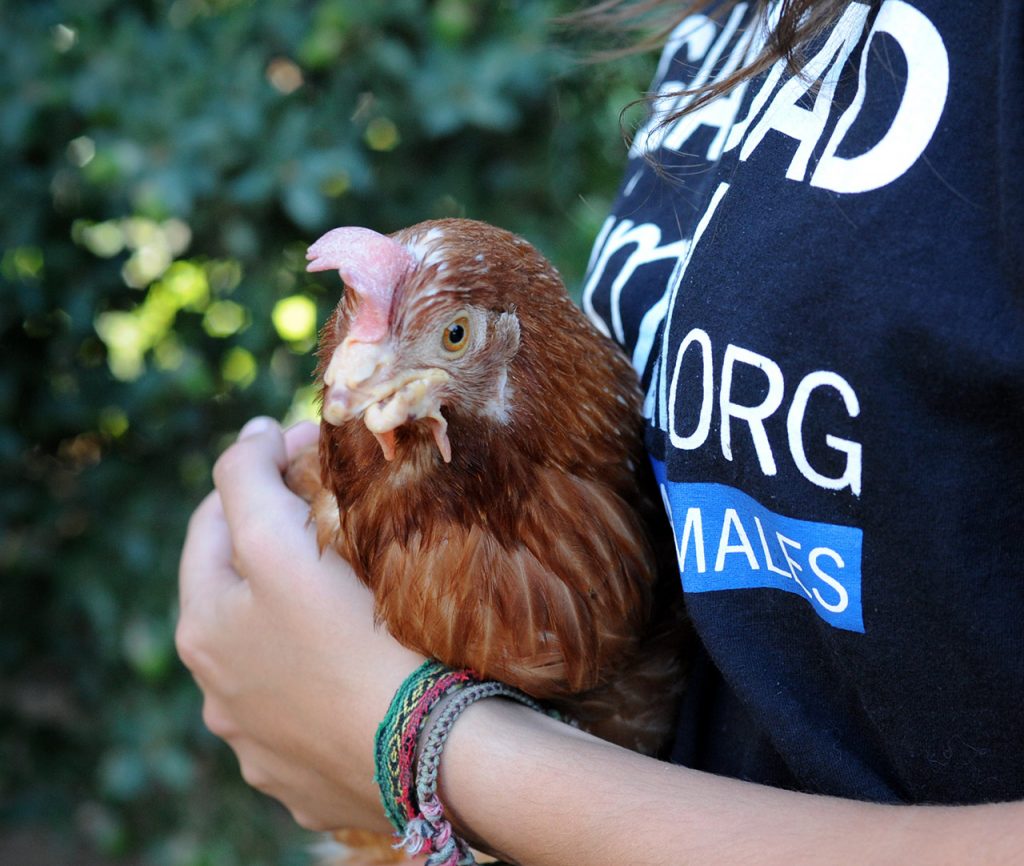
LIVE KINDLY
With rich emotional lives and unbreakable family bonds, farmed animals deserve to be protected.
You can build a kinder world by replacing animal food products with plant‑based ones.
But why stop there? You can also sign our petition to end factory farming in the U.S. and share it with your friends and family. Arm-in-arm, we can send a message to companies trying to conceal the truth: we’re watching and demand better.

